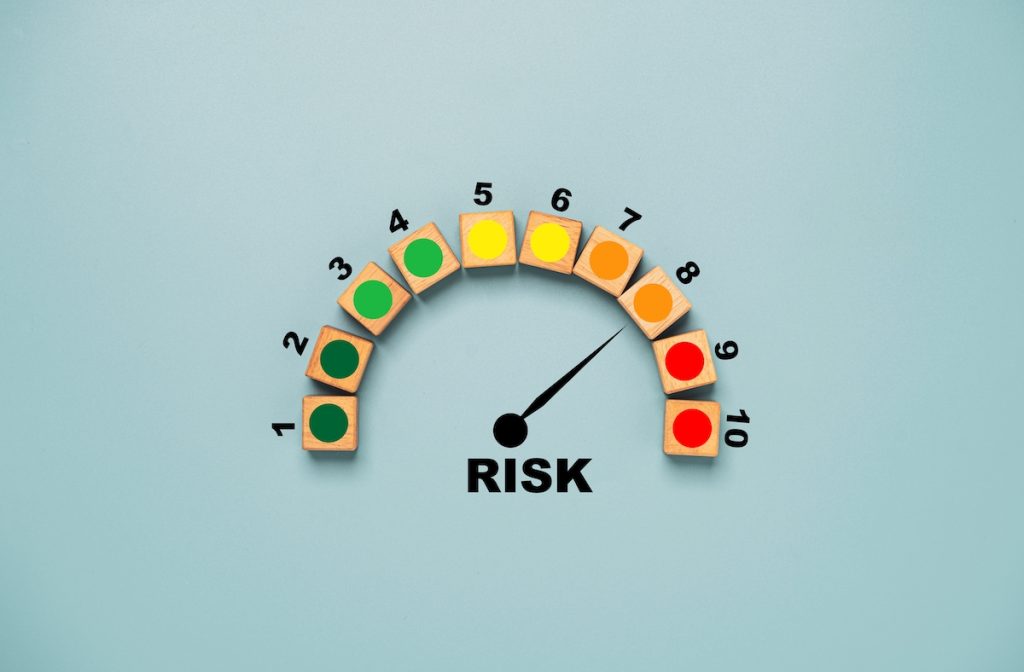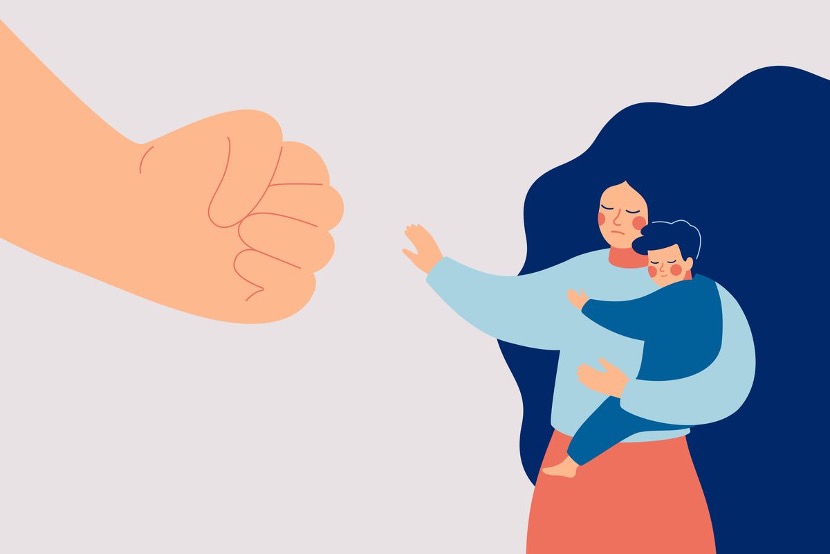
Individuals with mental disorders have been shown to be at increased risk of both violence perpetration (Whiting et al., 2021) and violent victimisation (Dean et al., 2018). Only three studies from a systematic review were found to have used the same cohort to investigate violent victimisation and violence perpetration risks in individuals with and without mental disorders (Marr et al., 2024), and one of these studies was previously discussed in a 2020 Mental Elf blog post (Steeg, 2020).
Although these studies generally indicate elevated risks of violence-related outcomes in individuals with mental disorders, these studies have used either self-report data (Tsigebrhan et al., 2014) or different registers to identify and define violent victimisation versus perpetration (Sariaslan et al., 2020; Walter et al., 2019).
In this blog post, we discuss a study recently conducted by Dean et al. (2024) in the Danish population. Similarly to previous studies (Sariaslan et al., 2020; Walter et al., 2019), this study used linked data from national registers to evaluate the association between mental disorders and the outcomes of violent victimisation and violence perpetration at the population level. However, in contrast to previous literature, information on both outcomes was retrieved from Danish police records, rather than healthcare records.
The aims of this cohort study were therefore to estimate:
- The absolute risk of violent victimisation and violence perpetration 1 and 5 years post-mental disorder onset; and
- The relative risk of violent victimisation and violence perpetration in individuals with mental disorders compared to the general population.

“Previous research has suggested that people with severe mental illness are at elevated risk of both violence perpetration and violent victimisation, with risk of the latter being perhaps greater than the former. However, few studies have examined risk across both outcomes.”
Methods
Individuals born in Denmark between 1 January 1985 and 31 December 2001 who were alive and living in Denmark at 15 years old comprised the cohort. Information on demographics, mental disorders, and violence-related outcomes were obtained from national registers linked on a unique identification number (Pedersen et al., 2011).
Exposure was defined as diagnosis of any mental disorder, and the outcomes of interest were violent victimisation and violence perpetration, defined as follows:
- Violent victimisation, defined as the first victimisation date for a police-recorded violent crime;
- Violence perpetration, defined as the first conviction date for a police-recorded violent crime.
Individuals were followed from 1 January 2001 or their 15th birthday (whichever was latest) until the outcome of interest, death, emigration, or 31 December 2016 (whichever came first). As measures of absolute risk, the researchers obtained cumulative incidence functions of first violent victimisation and perpetration at 1 and 5 years following mental illness onset. For measuring relative risk, incidence rate ratios of violent victimisation and violence perpetration in were calculated using Poisson regression. Absolute and relative risks were analysed separately by sex.
Results
In total, for the outcome of violent victimisation 1,119,583 individuals were followed-up for a mean duration of 7.8 years, resulting in 8,786,886 person-years at risk. For the outcome of violence perpetration, 1,131,106 individuals were followed-up for a mean duration of 8.0 years, resulting in 8,974,864 person-years at risk. The sample was young, with a mean age at follow-up of 23 years.
Overall, 55,465 individuals, 69% of whom were men, were victimised during follow-up. A total of 36,932 individuals, 85% of whom were men, committed violent offences. The mean age at time of victimisation and violence perpetration were 19.8 and 19.3 years, respectively.
The researchers summarise their findings in the abstract of their paper like this:
Men with a mental disorder had higher absolute risks of both outcomes than women [victimisation: Cin (5 year) = 7.15 (6.88 to 7.42) versus Cin (5 year) = 4.79 (4.61 to 4.99); perpetration: Cin (5 year) = 8.17 (7.90 to 8.46) versus Cin (5 year) = 1.86 (1.75 to 1.98)], as was the case with persons in the general population without a recorded mental illness diagnosis.
This suggests that, importantly, men were at a greater risk of both violence victimisation and perpetration, adjusted for age and time. The violent victimisation and perpetration rate was 2.2 and 5.7 times as high for men compared to women, respectively.
It also suggests that men with a mental disorder are more likely to be perpetrators of violence, than they are to be victims of violence. This finding is counter to many of the mental health anti-stigma campaigns of recent years.
Absolute risk for being subject to a police-recorded violent crime in individuals with mental disorders were:
- 9% for men within the first year of illness onset
- 5% for men within 5-years post-illness onset
- 1% for women within the first year
- 8% for women within five years post-illness onset
Absolute risk for perpetrating a police-recorded violent crime in individuals with mental disorders were:
- 3% for men within the first year of illness onset
- 2% for men within 5-years post-illness onset
- 5% for women within the first year
- 9% for women within five years post-illness onset
Absolute risk of experiencing either outcome in men was 3.6% within the first year of illness onset and 12.8% with 5 years. For women, the risk of either outcome was 1.5% within 1 year and 5.9% within 5 years.
Regarding specific mental disorders, men and women with diagnoses of personality disorders, substance use disorders, and schizophrenia were at highest risk of violence victimisation and violence perpetration.

Women with mental illness had higher absolute risk of victimisation than perpetration, but the opposite was true for men with mental illness.
Conclusions
This study concludes:
In this large national register-based longitudinal study […] a complex pattern of associations was uncovered. While both types of violent experiences occurred more frequently amongst persons with mental illness, whether risk of one was greater than the other depended on a range of factors of sex and diagnosis.
Critically, the authors’ emphasis how most young people with mental illness are not subjected to, nor perpetrate police-recorded violent crimes. However, the risk of these violent outcomes is still significant and warrants further investigation of the underlying drivers.

Young people following mental illness onset are at greater risk of violence victimisation and perpetration than those without mental illness.
Strengths and limitations
In this study, a large cohort of longitudinal data was linked from national registers containing officially recorded sociodemographic information, information on diagnoses of mental disorders, and information on violence-related outcomes in the Danish population. In addition to these registers providing comprehensive information on each individual, using data from these sources can help in reducing biases relating to selection, attrition, and information. Another strength is that through presenting analyses separately for men and women, this study highlights the differential magnitudes in the risk of violent victimisation and violence perpetration by sex. Finally, both violent victimisation and violence perpetration information were retrieved from police records. The researchers emphasise this strength, discussing not only the improved validity of police records as an indicator of victimisation when compared to previous studies’ use of secondary healthcare records, but also the benefit of both violence-related outcomes being recorded from the same source.
Though this study contains several important strengths, there are certain limitations to be aware of. With data on exposures coming from medical registers (Lynge et al., 2011; Mors et al., 2011) and data on outcomes coming from police records (Statistics Denmark, 2022, 2023) the mildest instances of either are unlikely to be present in this dataset. There could be other factors affecting how either exposure or outcome are reported; the researchers note that these can include sex, socioeconomic status, cultural context, and whether an individual has a mental disorder.
With the cohort ages ranging from 15 to 31, this study mainly investigates the associations between mental disorders and violence-related outcomes in young adults. Future research can therefore aim to encompass a broader age range for analyses. Regarding the specific violence-related outcomes, further analyses can additionally be delineated by more specific categories of violent victimisation and perpetration. Furthermore, in line with previous research on the association between violent victimisation and violence perpetration (Sariaslan et al., 2016), future studies can investigate these overlapping violence-related outcomes in a temporal context for individuals with mental disorders.

Further research is required to understand the temporal context of violence victimisation and perpetration following the onset of mental illness.
Implications for practice
This study adds epidemiological weight to the implementation of health maintenance strategies and risk management procedures to reduce the risk of violent outcomes in individuals with mental health disorders (specifically, substance use disorder, psychosis, and ‘personality disorders’). The findings highlight how experiences of victimisation and perpetration are more often comorbid, with experiences of both victimisation and perpetration more common than an experience of only one of the outcomes. Further research investigating the interaction between violence victimisation and violence perpetration could investigate whether victimisation proceeds perpetration (or vice versa), identifying underlying drivers of violent outcomes. From this, health maintenance strategies could be implemented to prevent escalation and comorbid violent outcomes.
Moreover, these findings emphasis the difference in risk in women compared to men. Women with mental illness had higher absolute risk of violent victimisation than perpetration, compared to women without mental illness. However, the converse was found for men with mental illness. Further work exploring what forms of victimisation are most common (disaggregated by sex) would add valuable insight. Women are at an increased risk of intimate partner violence (IPV) compared to men (Office of National Statistics, 2016), and it is estimated that approximately 30% of women globally have experienced some form of IPV (Sardinha et al., 2022). This risk is likely much higher in vulnerable populations, such as women with mental health disorders.
The data in this study showing that, on average, men with a mental disorder are more likely to be perpetrators of violence, than they are to be victims of violence, is a key finding and one that may conflict with current perspectives in mental health research and advocacy. As a field, we have spent the last 15 years working to move away from the ‘severe mental illness equals violence’ narrative that was previously so prevalent in the news media, and great strides have been made at reducing stigma towards people with mental illness. However, it’s important that the growing evidence-base linking male mental illness to violence perpetration is recognised. We should avoid stigmatising men living with severe mental illness who are also perpetrators of violent crime and move towards providing adequate support to this vulnerable population.

We should avoid stigmatising men living with severe mental illness who are also perpetrators of violent crime and move towards providing adequate support to this vulnerable population.
Statement of interests
We declare that the blog was written in absence of any commercial or financial conflicts of interest. Maya and Anabelle are both conducting register-based studies on violent victimisation.
Links
Primary paper
Dean, K., Laursen, T. M., Marr, C. et al (2024). Absolute and relative risk of violent victimisation and perpetration following onset of mental illness: A Danish register-based study. The Lancet Regional Health – Europe, 36. https://doi.org/10.1016/j.lanepe.2023.100781
Other references
Dean, K., Laursen, T. M., Pedersen, C. B. et al. (2018) Risk of Being Subjected to Crime, Including Violent Crime, After Onset of Mental Illness. JAMA Psychiatry, 75(7), 689–696. https://doi.org/10.1001/jamapsychiatry.2018.0534
Lynge, E., Sandegaard, J. L., & Rebolj, M. (2011) The Danish National Patient Register. Scandinavian Journal of Public Health, 39(7_suppl), 30–33. [PubMed abstract] https://doi.org/10.1177/1403494811401482
Marr, C., Webb, R. T., Yee, N. et al. (2024) A Systematic Review of Interpersonal Violence Perpetration and Victimization Risk Examined Within Single Study Cohorts, Including in Relation to Mental Illness. Trauma, Violence & Abuse, 25(1), 130–149. [PubMed abstract] https://doi.org/10.1177/15248380221145732
Mors, O., Perto, G. P., & Mortensen, P. B. (2011) The Danish Psychiatric Central Research Register. Scandinavian Journal of Public Health, 39(7_suppl), 54–57. https://doi.org/10.1177/1403494810395825 [PubMed abstract]
Office of National Statistics. (2016) Intimate personal violence and partner abuse—Office for National Statistics. https://www.ons.gov.uk/peoplepopulationandcommunity/crimeandjustice/compendium/focusonviolentcrimeandsexualoffences/yearendingmarch2015/chapter4intimatepersonalviolenceandpartnerabuse, last accessed 12 Apr 2024.
Pedersen, C. B., Gøtzsche, H., Møller, J. Ø. et al. (2011) The Danish Civil Registration System. Scandinavian Journal of Public Health, 39(7_suppl), 22–25. https://doi.org/10.1177/1403494810387965 [PubMed abstract]
Sardinha, L., Maheu-Giroux, M., Stöckl, H. et al. (2022) Global, regional, and national prevalence estimates of physical or sexual, or both, intimate partner violence against women in 2018. The Lancet, 399(10327), 803–813. https://doi.org/10.1016/S0140-6736(21)02664-7
Sariaslan, A., Arseneault, L., Larsson, H. et al. (2020) Risk of Subjection to Violence and Perpetration of Violence in Persons With Psychiatric Disorders in Sweden. JAMA Psychiatry, 77(4), 359–367. https://doi.org/10.1001/jamapsychiatry.2019.4275
Sariaslan, A., Lichtenstein, P., Larsson, H. et al. (2016) Triggers for Violent Criminality in Patients With Psychotic Disorders. JAMA Psychiatry, 73(8), 796. https://doi.org/10.1001/jamapsychiatry.2016.1349
Statistics Denmark. (2022) Documentation of statistics: Convictions. https://www.dst.dk/en/Statistik/dokumentation/documentationofstatistics/convictions, last accessed 12 Apr 2024.
Statistics Denmark. (2023) Documentation of statistics: Victims of Reported Criminal Offences. https://www.dst.dk/en/Statistik/dokumentation/documentationofstatistics/victims-of-reported-criminal-offences, last accessed 12 Apr 2024.
Steeg, S. (2020) Psychiatric diagnosis and risk of being a victim or perpetrator of violence. The Mental Elf. https://www.nationalelfservice.net/diagnosis/risk-factors/psychiatric-diagnosis-risk-violence/, last accessed 12 Apr 2024
Tsigebrhan, R., Shibre, T., Medhin, G., Fekadu, A., & Hanlon, C. (2014) Violence and violent victimization in people with severe mental illness in a rural low-income country setting: A comparative cross-sectional community study. Schizophrenia Research, 152(1), 275–282. https://doi.org/10.1016/j.schres.2013.10.032 [PubMed abstract]
Walter, F., Carr, M. J., Mok, P. L. H. et al. (2019) Multiple adverse outcomes following first discharge from inpatient psychiatric care: A national cohort study. The Lancet Psychiatry, 6(7), 582–589. https://doi.org/10.1016/S2215-0366(19)30180-4
Whiting, D., Lichtenstein, P., & Fazel, S. (2021). Violence and mental disorders: A structured review of associations by individual diagnoses, risk factors, and risk assessment. The Lancet Psychiatry, 8(2), 150–161. https://doi.org/10.1016/S2215-0366(20)30262-5
Photo credits
- Photo by Ludovic Migneault on Unsplash
